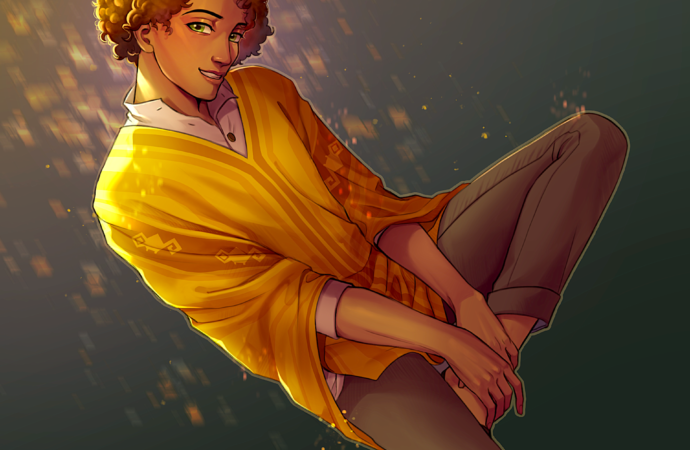Camilo Madrigal has diligently worked to establish himself as a renowned artist within the global art community since the early 1990s. A strong commitment to social and political engagement and a keen interest in learning about new media and technologies define his artistic vision. In Camilo madrigal writing, censorship, oppression, and other types of social
Camilo Madrigal has diligently worked to establish himself as a renowned artist within the global art community since the early 1990s. A strong commitment to social and political engagement and a keen interest in learning about new media and technologies define his artistic vision.
In Camilo madrigal writing, censorship, oppression, and other types of social injustice are frequently discussed. For instance, Madrigal produced a series of 26 letters from the censored books of the Salvadoran government in his “The Censored Alphabet” (1994–1955) series. A different book that the government had outlawed was represented by each letter.
Camilo madrigal has also been drawn to experimenting with new media and technologies in his work. He used infrared technology to make an invisible self-portrait for “The Invisible Man” (1997). He produced a virtual reality installation called “The Virtual Museum” in 2000 that let viewers explore a digital museum of contemporary art.
Camilo madrigal artwork has been displayed widely, including at the Center Pompidou in Paris, the Tate Modern in London, and the Museum of Modern Art in New York. Additionally, a number of significant private collections hold his work.
Camilo Madrigal Original Artistic Vision
Realistic representations of the world around us have become an increasing concern for artists since the Renaissance. When painters like Gustave Courbet and Jean-Baptiste-Camille Corot worked to make paintings that were as realistic as possible, this trend peaked in the 19th century. One artist, Camilo Madrigal, defied this trend and created his own distinctive view of the world.
Madrigal, who was born in Spain in 1868, immigrated to Argentina as a young boy with his family. He began his artistic career as a sculptor but soon switched to painting, where he would go on to become well-known. Madrigal was largely self-taught, and the Spanish masters he had studied as a child greatly impacted his style. But he also found inspiration in Argentina’s landscapes, which were unlike anything he had ever seen before.
The vibrant use of colour and light in Camilo madrigal paintings distinguishes them. He frequently used strong primary colours to convey a sense of vibrancy and energy, and he was not afraid to try out novel approaches. For instance, Madrigal applied thick layers of paint to the canvas using the impasto technique in his painting “La Catedral de Buenos Aires” (The Cathedral of Buenos Aires). Because of this, the painting acquired an unusually textured, almost three-dimensional quality.
Madrigal also employed lighting in a novel way. He frequently depicted scenes with the sun directly overhead, which produced a stark contrast between light and dark. His use of colour also contributed to this, heightening the drama and tension in his paintings.
Madrigal was one of the most prominent figures in the early 20th-century Argentine art scene because of his distinctive artistic style. He even had the chance to exhibit his work in Europe. His paintings were shown widely. Camilo madrigal career, however, was cut short by his tragic passing in 1923. Only 55 years old.
The Influence of Camilo Madrigal Art
One must first comprehend Camilo Madrigal as a person before considering his artistic vision. In 1841, Madrigal was born in Seville, Spain. He was the grandson of a well-known composer and the son of a prosperous businessman. Camilo madrigal exhibited a strong interest in and talent for the arts at a young age. He received his education at the esteemed Seville Academy of Fine Arts, where he was instructed by some of the most well-known artists of the day.
Landscapes and portraits predominated in Madrigal’s early works. But what first caught the public’s eye was his 1868 painting, the Execution of Torrijos and His Companions. The painting, which showed a Spanish general and his men being executed, was disturbing and graphic. Additionally, it was a blatant declaration of Camilo madrigal political views.
Following Torrijos’ execution, Camilo madrigal writing became more overtly political. He started depicting the Spanish Civil War and the exploitation of the working class in his paintings. He did not hold back when expressing his opinions, and his writing was harshly critical of both the Church and the government.
Camilo madrigal political beliefs and personal experiences influenced his artistic vision. He was a man who had no qualms about challenging authority or speaking his mind. His works of art are a reflection of his dedication to social justice and his conviction that art should be used to effect change.
Camilo Madrigal Artistic Vision and Its Importance
A critique of the society in which Camilo Madrigal lived can be seen in his artistic vision. Camilo madrigal art was firmly rooted in his own personal experiences, and it frequently reflected the realities of life in Spain during the early twentieth century. The use of light and shadow and the emphasis on the human figure define Madrigal’s work. Madrigal frequently explores the human condition in his artwork, and his paintings frequently convey a profound sense of melancholy.
Madrigal’s work is important because it offers a unique window into Spanish life at a time of intense social and political upheaval. Because it provides a unique window into the life of an artist who was profoundly impacted by the events of his time, Camilo madrigal work is significant.

Camilo Madrigal Artistic Vision’s Effect
It’s common to think of art as a way for creators to communicate their deepest emotions and thoughts to the public. Some people use art to tell their stories and convey their messages. Others use art as a therapeutic tool and a means of self-expression. Whatever the motivation behind making art, it is a potent tool that can be used to make a positive difference in the world.
Camilo Madrigal is an artist who has made a positive difference in the world through his work. His art is based on his own personal experiences and the experiences of others. Camilo madrigal art is a form of social commentary that addresses important issues such as poverty, violence, and corruption.
Camilo madrigal art is unique because it is based on his own personal experiences. He was born in El Salvador and lived in a small village called La Union. Madrigal’s early years were spent in poverty, and he witnessed firsthand the effects of violence and corruption. These experiences have had a profound impact on Madrigal and have influenced his art.
Camilo madrigal art is also unique because it is based on the experiences of others. He has interviewed people who have been affected by violence, poverty, and corruption. These interviews have helped Madrigal to understand the issues that his art addresses.
Camilo madrigal art is powerful because it addresses important issues that are often overlooked. His art gives a voice to those who are often unheard. Madrigal’s art is also powerful because it is based on personal experiences. This makes his art relatable and impactful.
Camilo madrigal art has had a positive impact on the world. His art has been featured in major exhibitions and has been acquired by prestigious museums. Madrigal’s art has also been used to raise awareness about important issues. For example, his art was used to raise awareness about the problems of violence, poverty, and corruption in El Salvador.
Camilo madrigal art has positively impacted the world because it is based on his own personal experiences.
Camilo Madrigal and the Impact of his Work on Latin American Culture
Camilo Madrigal and the Impact of his Work on Latin American Culture
Camilo Madrigal is considered one of the most important Latin American artists of the 20th century. His work profoundly impacted the development of Latin American culture, particularly in the area of mural painting.
Camilo madrigal was born in Mexico in 1891. He began his career as a painter but soon turned to mural painting. He was deeply influenced by the Mexican Revolution and his country’s resulting social and political changes. His murals often depicted scenes of struggle and resistance.
Camilo madrigal work was also influenced by the indigenous cultures of Latin America. He was particularly interested in the Maya and Aztec civilizations. He often incorporated elements of their art into his own murals.
Camilo madrigal murals can be found in many public places in Latin America, including Mexico, Guatemala, and Cuba. They are considered masterpieces of Latin American art.
The Life and Work of Camilo Madrigal
Camilo Madrigal was a Mexican writer, journalist, and social activist who influenced Latin American culture during the early twentieth century. Madrigal was born in Mexico City in 1879 and educated at the prestigious Colegio de Mexico. He began his career as a journalist, working for various newspapers and magazines in Mexico City. He was also a prolific writer, and his work was highly critical of the Mexican government and its treatment of the country’s indigenous population.
Madrigal was an ardent supporter of the Mexican Revolution and played a key role in promoting the ideals of the Revolution throughout Latin America. He was a close friend of Mexican revolutionary leader Emiliano Zapata, and he served as Zapata’s personal secretary during the early years of the Revolution. Camilo madrigal was also a close friend of Mexican president Venustiano Carranza and served as Carranza’s ambassador to the United States.
Madrigal’s work was highly influential in shaping Latin American culture during the early twentieth century. He was a strong advocate for the rights of indigenous people, and his work helped to promote a more positive image of indigenous people in Latin America. Camilo madrigal work also helped promote Mexico’s more positive image in the international community.
Camilo madrigal died in Mexico City in 1923. His work continues to be highly respected in Latin America, and his legacy continues to influence Latin American culture.
The Impact of Camilo madrigal Work on Latin American Culture
Camilo Madrigal is considered by many to be one of the most important Latin American composers of the 20th century. His work had a significant impact on the development of Latin American music, both in terms of its content and its form.
Madrigal was born in Cuba in 1884 and began his musical education at the conservatory in Havana. He later studied in Barcelona and Paris, where he became exposed to the work of European composers such as Claude Debussy and Maurice Ravel. These influences can be heard in his own work, which often employs impressionistic harmonies and colourful orchestrations.
His experience also shaped Madrigal’s compositional style as a conductor. He led several orchestras in Cuba and Mexico, and his familiarity with Latin American performing traditions informed his composition approach. He frequently wrote music that was designed to be accessible to a wide range of audiences, using simple melodic lines and dance-like rhythms.
Camilo madrigal work was hugely influential in the development of Latin American music in the 20th century. His use of folkloric elements and popular musical styles helped to create a distinctly Latin American sound, and his work was an important inspiration for subsequent generations of composers.
The Legacy of Camilo Madrigal
Camilo Madrigal was a Cuban-American writer, director, and producer. He was born in Havana, Cuba, in 1925 and came to the United States in 1960. Madrigal was a major figure in the Latin American film movement known as the New Latin American Cinema. His films were characterized by their social realism and focus on working-class people’s everyday lives. Camilo madrigal most famous film is “El Super” (1979), which tells the story of a Cuban janitor who tries to improve his family’s life by winning the lottery. Madrigal’s work had a significant impact on Latin American cinema, and he is considered one of the most important filmmakers of his generation.
Camilo Madrigal: A Pioneer of Latin American Modernism
Camilo Madrigal: A Pioneer of Latin American Modernism
Camilo Madrigal (1899-1985) was a pioneer of Latin American Modernism. He was born in Chile and educated in Europe, where he was exposed to the avant-garde movements of the time. When he returned to Chile, he brought with him a new vision for Chilean art.
Madrigal was a member of the Grupo Montparnasse, a group of Chilean artists who were influenced by French Cubism and Fauvism. He was also a founding member of the Chilean Association of Painters and Sculptors, promoting Chilean art internationally.
Camilo madrigal work was often associated with Chilean folk art, as he often used traditional motifs and symbols in his work. However, European Modernism also deeply influenced his work, and he was one of the first Chilean artists to embrace abstraction.
Camilo madrigal work has been exhibited widely in Chile and Latin America, and his paintings can be found in the collections of the Museum of Modern Art in New York, the Tate Gallery in London, and the Museo Nacional de Bellas Artes in Santiago, Chile.
The Life and Work of Camilo Madrigal
Camilo Madrigal was a Colombian painter and sculptor who played a pivotal role in the development of Latin American Modernism. He was born in Bogotá in 1881 and studied art in both Europe and Colombia. In Europe, he was exposed to the work of the great masters of the Renaissance and the post-impressionists, which profoundly impacted his own work.
Upon his return to Colombia, Madrigal founded the Escuela de Bellas Artes in Bogotá, which became a breeding ground for young Latin American artists who would go on to shape the course of the region’s art scene. Camilo madrigal himself was a prolific artist, and his work ranged from portraiture to landscapes to still lives. He frequently experimented with different styles and techniques, and his work was characterized by a bold use of colour and light.
Camilo madrigal work was instrumental in introducing Modernism to Latin America, and he continues to be revered as one of the region’s most important artists. His work can be seen in many of the region’s major museums, and his legacy continues to inspire new generations of artists.
Camilo Madrigal and the Development of Latin American Modernism
In the early 20th century, a new artistic movement was sweeping across Europe. This movement, known as Modernism, would come to have a profound impact on the arts worldwide. In Latin America, Camilo Madrigal was one of the most influential figures in developing this new art style.
Madrigal was born in 1881 in the city of Santiago, Chile. He began his studies in art at a young age, and his talent was quickly evident. In 1900, he was awarded a scholarship to study art in Europe. Madrigal spent the next several years travelling across Europe, studying under some of the most renowned artists of the day. He was particularly influenced by the work of Pablo Picasso and Paul Cézanne.
Upon his return to Chile in 1906, Madrigal began experimenting with the new Modernist style in his work. He was one of the first Latin American artists to embrace this new aesthetic, and his work soon began to attract attention both in Chile and abroad. Madrigal profoundly impacted the development of Modernism in Latin America, and his work remains highly influential to this day.
The Influence of Camilo Madrigal on Latin American Modernism
Camilo Madrigal is considered one of the pioneers of Latin American Modernism. His work had a significant influence on the development of the Latin American art scene in the early 20th century.
Madrigal was born in Costa Rica in 1886. He studied art in Europe, where he was exposed to the work of the French Impressionists and Post-Impressionists. He also visited Morocco, which had a profound impact on his work. Upon his return to Costa Rica, he began experimenting with different styles and techniques, incorporating European and Moroccan art elements into his own unique style.
Camilo madrigal work was initially met with scepticism by the Costa Rican art establishment. However, he quickly gained recognition from his peers and became one of the leading figures of the Latin American Modernist movement. His work was featured in several important exhibitions, including the Panama-Pacific International Exposition in 1915 and the Sao Paulo Biennial in 1929.
Camilo madrigal work was deeply influenced by his travels and experiences in Europe and Morocco. He often used bold colours and patterns in his paintings, which was a departure from the more subdued palette typically used by Costa Rican artists. His work was also notable for its use of light and shadow to create a sense of depth and movement.
Camilo madrigal work significantly impacted the development of Latin American Modernism. His bold use of colour and pattern was an important influence on subsequent generations of Latin American artists. His work also helped to legitimize the Modernist movement in Latin America and paved the way for future innovators.



















Leave a Comment
Your email address will not be published. Required fields are marked with *